I have this code
ggplot()
+ geom_histogram(aes(x=V1, y=(..count..)/sum(..count..)), fill="red", alpha=.4, colour="red", data=coding, stat = "bin", binwidth = 30)
+ geom_histogram(aes(x=V1,y=(..count..)/sum(..count..)), fill="blue", alpha=.4, colour="blue", data=lncrna, stat = "bin", binwidth = 30)
+ coord_cartesian(xlim = c(0, 2000))
+ xlab("Size (nt)")
+ ylab("Percentage (%)")
+ geom_vline(data=cdf, aes(xintercept=rating.mean, colour=Labels), linetype="dashed", size=1)
that produces a beautiful histogram without legend:

In every post I visit with the same problem, they say to put color inside aes. nevertheless, this does not give any legend.
I tried:
ggplot() + geom_histogram(aes(x=V1, y=(..count..)/sum(..count..),color="red", fill="red"), fill="red", alpha=.4, colour="red", data=coding, stat = "bin", binwidth = 30)
+ geom_histogram(aes(x=V1,y=(..count..)/sum(..count..), color="blue", fill="blue"), fill="blue", alpha=.4, colour="blue", data=lncrna, stat = "bin", binwidth = 30)
+ coord_cartesian(xlim = c(0, 2000))
+ xlab("Size (nt)")
+ ylab("Percentage (%)")
+ geom_vline(data=cdf, aes(xintercept=rating.mean, colour=Labels), linetype="dashed", size=1)
without success.
How can I put a legend in my graph?
